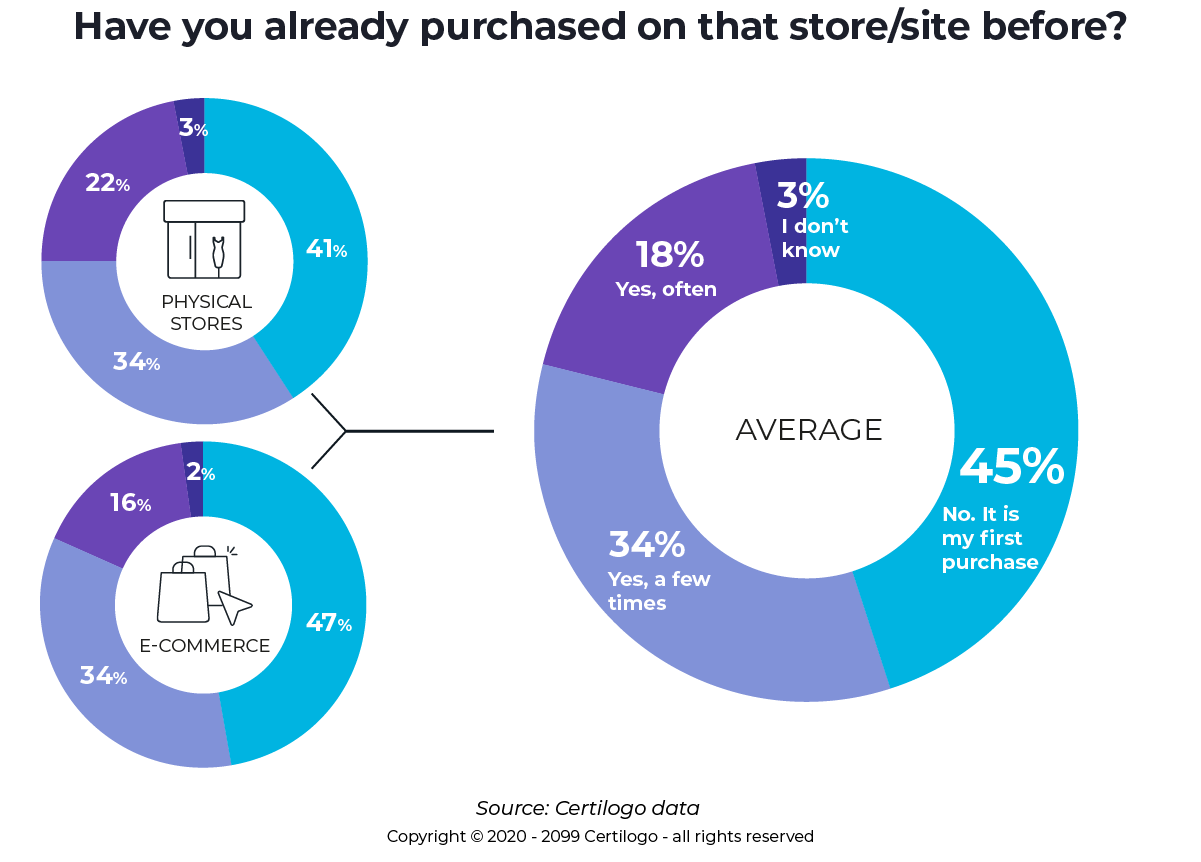Connected products: a direct channel between the brand and consumers that attracts true fans of the brand and draws in the high spenders
Let's imagine a world in which every physical product can communicate thanks to a smart tag and in which any consumer, wherever they are, can connect to both that object and the brand that created it. Then, let's imagine finding out that the users connecting are high spenders who are loyal to the brand or "newcomers" who will come back more willingly following this experience. If we add the certificate of authenticity to the connected product experience, then that vision becomes a reality.
Over the last 18 months, we’ve all - fashion and luxury brands, hardware and software service and solution providers operating in the sector - asked ourselves which changes we need to implement to accelerate digital transformation. We’ve all participated in at least one virtual conference on the subject. In recent research carried out on the resilience of the fashion sector in Italy in response to the impact caused by the pandemic, SDA Bocconi revealed that about 50% of Italian brands have adopted or plan to adopt a smart tagging solution, and that 63% of these cases include a consumer-facing authentication service. Therefore, in May and June of this year, we interviewed 3,500 users in over 100 countries who connected to products equipped with smart tags with a view to understanding who they are and the impact of the connected product experience on their inclination to interact with the brand and make purchases in the future. The interviews were initiated via the smart tag itself and featured a 4-question questionnaire at the end of authentication.
The identikit of connected consumers
True fans of the brand: 67% of respondents declared that the product they connected to is by their favourite brand and the result is unrelated to the purchasing channel.

Even more so if they come from Great Britain, Italy or South Korea: it’s mainly fans of the brand who connect to the product in these 3 countries, accounting for between 73% and 80% of the overall totals. Chinese fashion consumers, on the other hand, tend to connect to the product even when it’s not their favourite brand: over half of Chinese consumers (53%) always choose to connect, even if they’ve only bought that particular product and know little or nothing about the brand.

Consumers who purchase from anywhere, often from new stores: on average, only 18% of the consumers interviewed bought their product from the usual store/website, while for 45% of them it was their first purchase from that salespoint, confirming the fact that brand lovers also like change and won’t hesitate to buy items by their favourite brands from stores they’re not familiar with.

Those willing to purchase other products by the brand: 77% of respondents stated that they’ll certainly (42%) or probably (35%) purchase other products by the brand in the near future.

The decision to purchase is based on value for money, assortment and quality of service.
It’s no surprise that the main reason for choosing a store is value for money, especially when it comes to online purchases. However, the assortment of products is the second reason, especially when a purchase takes place in a physical store: 1 out of 3 consumers choose a store precisely because they’re certain of finding the product they’re looking for. The decision by many brands to invest in tools that allow consumers, even remotely and in real time, to check the availability of products in the physical stores they are about to visit is an effective response to a clear need that has probably been exacerbated by the lockdown experience and its consequences. Quality of service, which also includes the delivery experience in the case of online purchases, ranks third among the reasons for choosing a store.

Connected products are the gateway to a world of useful services.
We asked interviewees which services they would like to access via a smart tag. The certificate of authenticity ranked first, especially by those who purchase online, followed by information on product care and - last but not least, for about a quarter of respondents - the opportunity to find other products that complete their look. er circa un quarto degli utenti – la possibilità di trovare altri prodotti che completano il look.

Conclusions
There is no doubt that connected products, especially when enabled for the certificate of authenticity, are a privileged channel through which to identify and get in touch with the brand’s high-value consumers, most of whom class themselves as loyal buyers who say they are likely to purchase other products by the same brand in the immediate future. Regardless of the purchase channel, they’re willing to engage with value-added content and services, including certificates of authenticity, product information and tips on how to complete their look.
We’ve entered an era, especially after the pandemic, in which an experience with a brand can no longer be confined to controlled distribution channels. It needs to become digital, viral, omnichannel and consistent with the choice of purchase, as well as the brand identity. It’s an era in which the true channel of connection and interaction is the product itself. It’s an economic, global and permanent channel and its effectiveness must be exploited independently of the special experience reserved to those who purchase in stores, because there’s an increasing number of loyal customers that we need to find out more about and engage, even if they never actually enter a store owned by the brand. Seeing is believing.
Get in touch with us to find out how easy it is to transform your physical products into connected products or how to inject new energy into an underperforming smart tagging project.






















